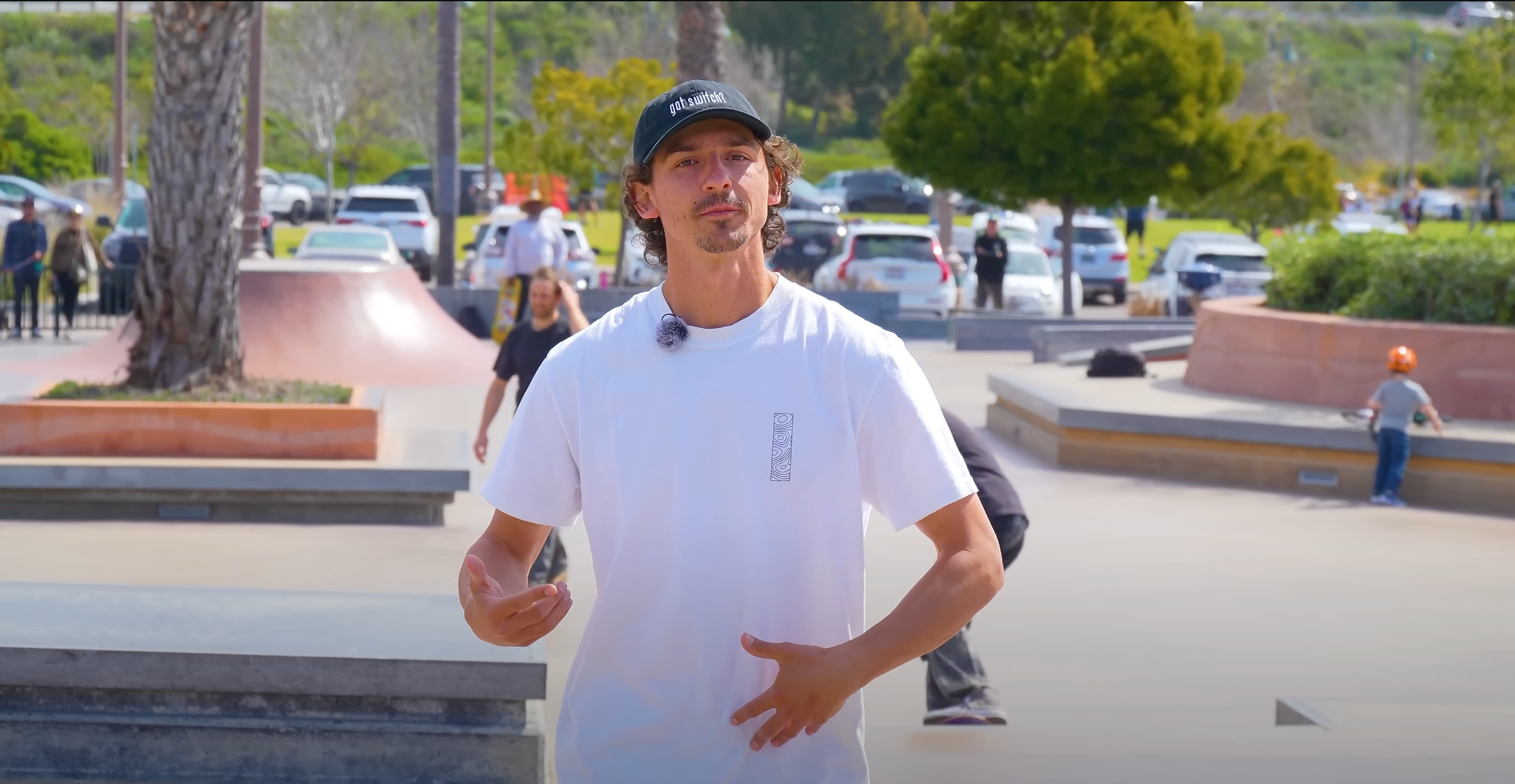Mastering Switch: The Key to Becoming a Great Skateboarder
Skateboarding is all about progression, and one of the easiest ways to elevate your skills is by learning how to skate switch. Many skaters view switch skating as a completely different skill set from their natural stance, but that mindset is what holds them back. The truth is, switch skating is just an extension of what you already know, and mastering it will enhance your overall control, balance, and trick consistency. Plus, once you get comfortable skating switch, an entire new set of tricks becomes available to you.
What It Means to Switch Stances
The first step to getting comfortable with switch skating is a simple one: switch your stance. If you’re a goofy skater, you’ll now be a regular skater, and vice versa. Your back foot is now the one on the tail, and your front foot is the one closer to the center of the board. This mental shift is crucial—rather than thinking of switch as skating backwards, recognize it as simply flipping your normal stance.
Many skaters overcomplicate switch by trying to analyze every detail about their body positioning, but the key is to approach it naturally. Stand on your board, adopt a strong standard foot position, and avoid the common mistake of turning your back foot outward too much, which can lead to bad habits. Your front foot should be turned slightly forward to open up your front hip, allowing for smoother movement and control.
As you take a squat in your switch stance, you’ll likely notice some differences compared to your strong stance. Your legs and ankles might feel weaker, and you may struggle to maintain balance at first. This is completely normal! The goal is to develop the same strength and confidence in your switch stance as you have in your natural stance.
Breaking Old Habits
One of the biggest obstacles in learning switch is the tendency to face backwards. This happens because your body is used to the micro-adjustments and weight distribution of your strong stance, and when you switch, those habits don’t just disappear.
Think of it like brushing your teeth with your non-dominant hand. At first, it feels awkward and unnatural, but with practice, it becomes second nature. The same applies to switch skating. The more time you spend doing everyday skate actions—pushing, stopping, throwing down—switch, the more natural it will feel.
Key Drills for Mastering Switch
To solidify your switch stance, here are a few essential drills:
1. Push and Single Leg Hold
-
Do a slow push and hold your front leg steady before placing your back foot on the tail.
-
Set your back foot down softly to develop balance and control.
-
Focus on standing tall as you place your back foot.
2. Squat Hold with Board Straight
-
Ride forward in your switch stance.
-
Take a deep squat while keeping the board straight.
-
Avoid accidental turns by maintaining even weight distribution.
3. Static Hippie Jump
-
Stand still in your switch stance and do a small hippie jump.
-
Land in the exact foot position you took off from.
-
Prevent your feet from turning back into a neutral stance.
4. Tail Scrapes
-
Place your back foot on the tail with your heel slightly off.
-
Lightly scrape the tail on the ground without stomping.
-
This builds control and confidence in your switch stance.
5. Tic Tacs
-
Push off your back foot to generate movement.
-
Counter-rotate your upper body against your lower body.
-
Maintain control by separating foot movement from shoulder movement.
6. Full Swing Push
-
Throw your back foot forward aggressively and extend it behind you.
-
Focus on balance and stability rather than speed.
-
Helps build muscle memory for pushing switch.
7. Wheel Hovers
-
Stand on the tail and push your front wheels down aggressively.
-
Pick your front wheels back up without touching the ground.
-
This drill mimics the weight distribution of an ollie.
8. Body Rotations
-
Start in a standard switch stance.
-
Rotate your upper body and hips while maintaining board control.
-
Helps improve balance and fluidity when skating switch.
Final Thoughts
Switch skating isn’t just about learning a new stance—it’s about unlocking the full potential of your skateboarding. By training your body to be equally strong and controlled in both stances, you’ll gain a deeper understanding of board control, improve your tricks, and open up a whole new realm of possibilities.
It will feel awkward at first, but that’s part of the process. Embrace the challenge, be patient with yourself, and most importantly, have fun with it. The more time you invest in switch skating, the more natural it will become.
Ready to take your switch game to the next level? Check out The Switch Guide for a full training program designed to help you master switch skating step by step!

